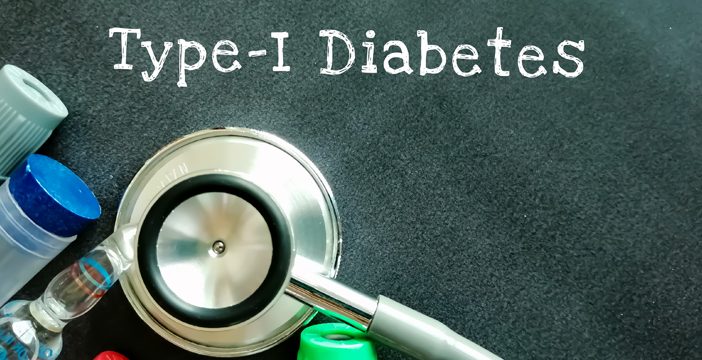
2025 Update to Diabetes Canada’s Clinical Practice Guidelines on Type 1 Diabetes
Why Do Guidelines Matter to Me?
The Diabetes Canada Clinical Practice Guidelines are updated to reflect the highest quality and most current research. They’re designed to make sure your diabetes care is based on strong evidence, balancing the risks and benefits of the latest treatment and management options. The ultimate goal? To support you in living a long, healthy life with type 1 diabetes (T1D).
Let’s discuss they key takeaways from the 2025 update: “Glycemic Management Across the Lifespan for People with Type 1 Diabetes.”
Recognizing the Need for an Individualized Approach to T1D Management
While we strive to reach blood sugar goals for long-term health, we also recognize that each person’s circumstances, goals and challenges are unique. For some, reaching an A1C below 7% may come with frequent lows or feel like it’s too much to manage every day. For others, meeting glucose targets can feel out of reach altogether.
Recent Canadian data shows that about one in three adults with T1D currently meet A1C targets. Encouragingly, this number is steadily improving. Today’s technology choices are making it more possible to reach glycemic goals with fewer lows, better quality of life, and less day-to-day burden.
A Major Shift: Strong Recommendation for Automated Insulin Delivery (AID)
In recent years, there have been major advances in Automated Insulin Delivery (AID) systems. These combine insulin pumps and continuous glucose monitors (CGMs) with control algorithms that automatically adjust background (basal) insulin based on your glucose levels. They can increase or decrease insulin delivery as your glucose rises or falls. Today’s systems are considered “hybrids” as they still require you to enter information for meals, activity and fine-tune some system settings.
Research on AID use has grown rapidly, showing strong evidence of impactful benefits. These include improving A1Cs and time spent within the target glucose range, fewer highs and lows, and less glucose variability. AID systems consistently optimize overnight glucose levels, and daytime improvements are also significant, especially since they reduce the daily effort required to manage T1D.
Improving the numbers is one thing, but you might also wonder if an AID system can actually make life with diabetes better. The answer is yes. Studies consistently show that these systems reduce fear of lows, lessen diabetes distress, improve quality of life, and can even improve sleep. AID systems can lift some of the heavy weights of self-management off your shoulders.
Importantly, AID has been shown to be safe and effective for people of all ages and backgrounds, regardless of your experience with diabetes management and/or technology. You don’t need to “earn” the right to use an AID system—it’s a tool that should be available to anyone who could benefit, provided you’re willing to wear it and complete training on your chosen system.
Access and coverage of AID systems vary across Canada, especially by province. Since coverage continues to evolve, keep checking for updates to your provincial health benefit program or private insurance plan.
What If AID Isn’t Right for Me?
There may be many reasons why AID is not the right fit for you now, or even in the future, and that’s completely understandable. If you prefer to stick with basal-bolus injections, talk with your diabetes care team about newer insulin options. Ultra-long-acting or ultra-fast-acting insulins might be able to help you better reach your goals.
No matter how you deliver insulin, using a real-time CGM is strongly recommended. CGMs have well-established benefits for optimizing glucose levels and improving quality of life. Plus, they are an important stepping stone should you decide to explore AID technology in the future.
Keep an open mind and continue to ask questions. Advances in diabetes care are always evolving, and your care team is there to help you navigate your choices.
More Than Insulin: Exploring Adjunctive Therapies
While not yet indicated for T1D, some medications used in type 2 diabetes have shown potential benefits for adults living with T1D. These treatments are never used on their own to manage T1D, but when used alongside insulin, are known as adjunctive therapies. They may help improve glucose levels, reduce insulin needs, and may provide additional protective health benefits. Talk with your diabetes care team to learn about the potential risks and benefits, and to decide if one of these options might be right for you.
Back to the Basics: Preventing & Treating Lows and Highs
Whether you use an AID system, a pump or basal-bolus injections, the basics of managing blood sugars still matter.
Revisit how you prevent and treat low blood sugars. Fast-acting carbs remain key for treating lows, but how much you need can vary based on your age and choice of insulin delivery. Talk to your care team about what’s right for you. It’s also beneficial to ask about intranasal glucagon (a nasal powder used to quickly treat low blood sugar), which is both convenient and effective to have on hand for emergencies.
Unexpected high blood sugars and diabetic ketoacidosis (DKA) can happen quickly if your body isn’t getting insulin due to a pump site failure or other issue. To help you act fast and prevent a medical emergency with DKA, have a backup plan in place. This means having extra supplies on hand (e.g. spare pump supplies, insulin, syringes and/or pens, blood glucose monitoring supplies, ketone-testing supplies) and knowing how to switch to insulin injections. Be sure to know the signs of DKA (i.e., nausea, vomiting and stomach pain) so you can act fast and seek medical help if needed.
Your T1D, Your Choices
Remember that managing type 1 diabetes is a personal journey—there’s no one-size-fits-all approach. Set out to find the tools and goals that fit for you, stay informed, and work together with your diabetes care team. Together, you can create a plan that supports effective T1D management while aligning with your personal goals, helping you maintain a balanced approach focused on what matters most to you.



